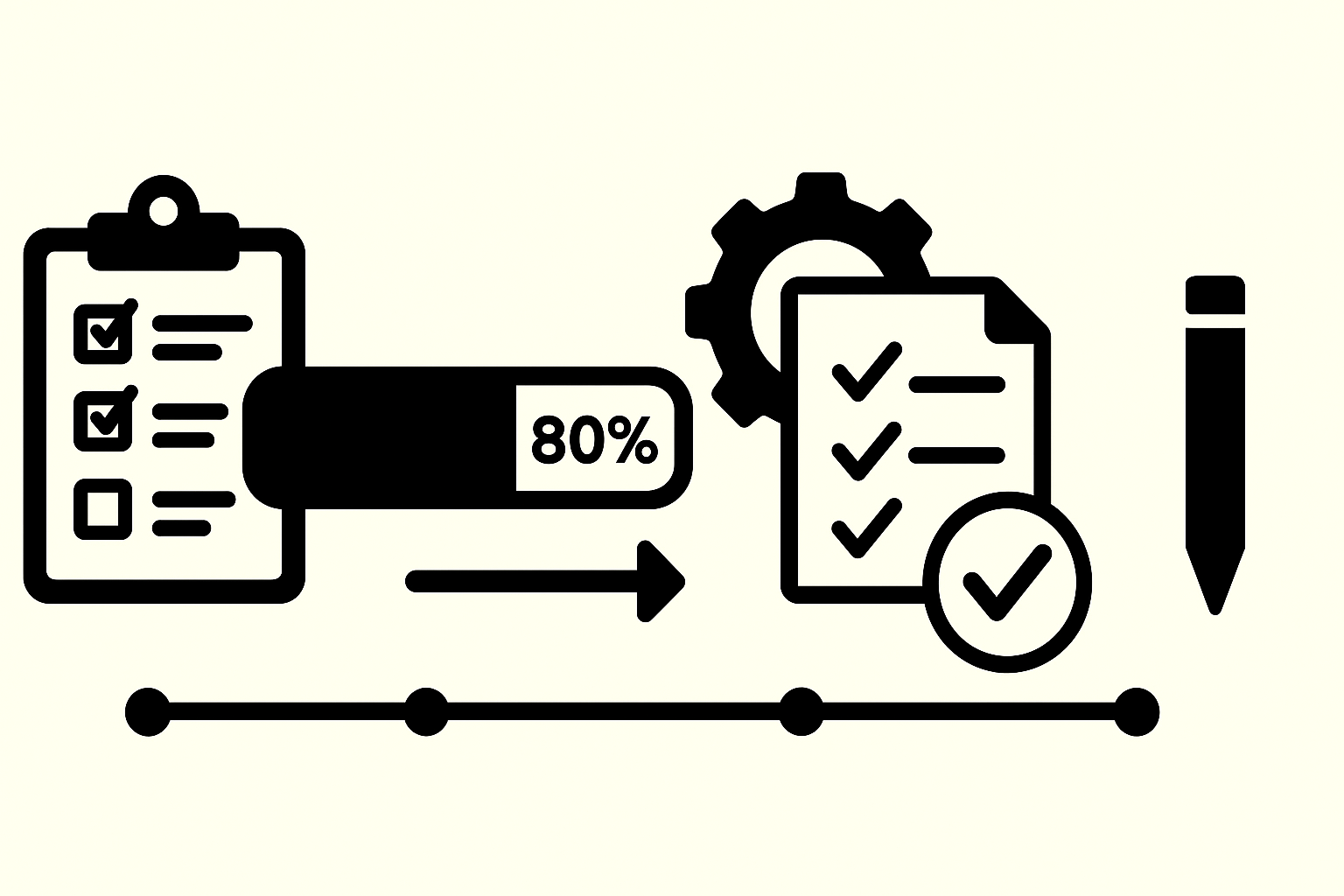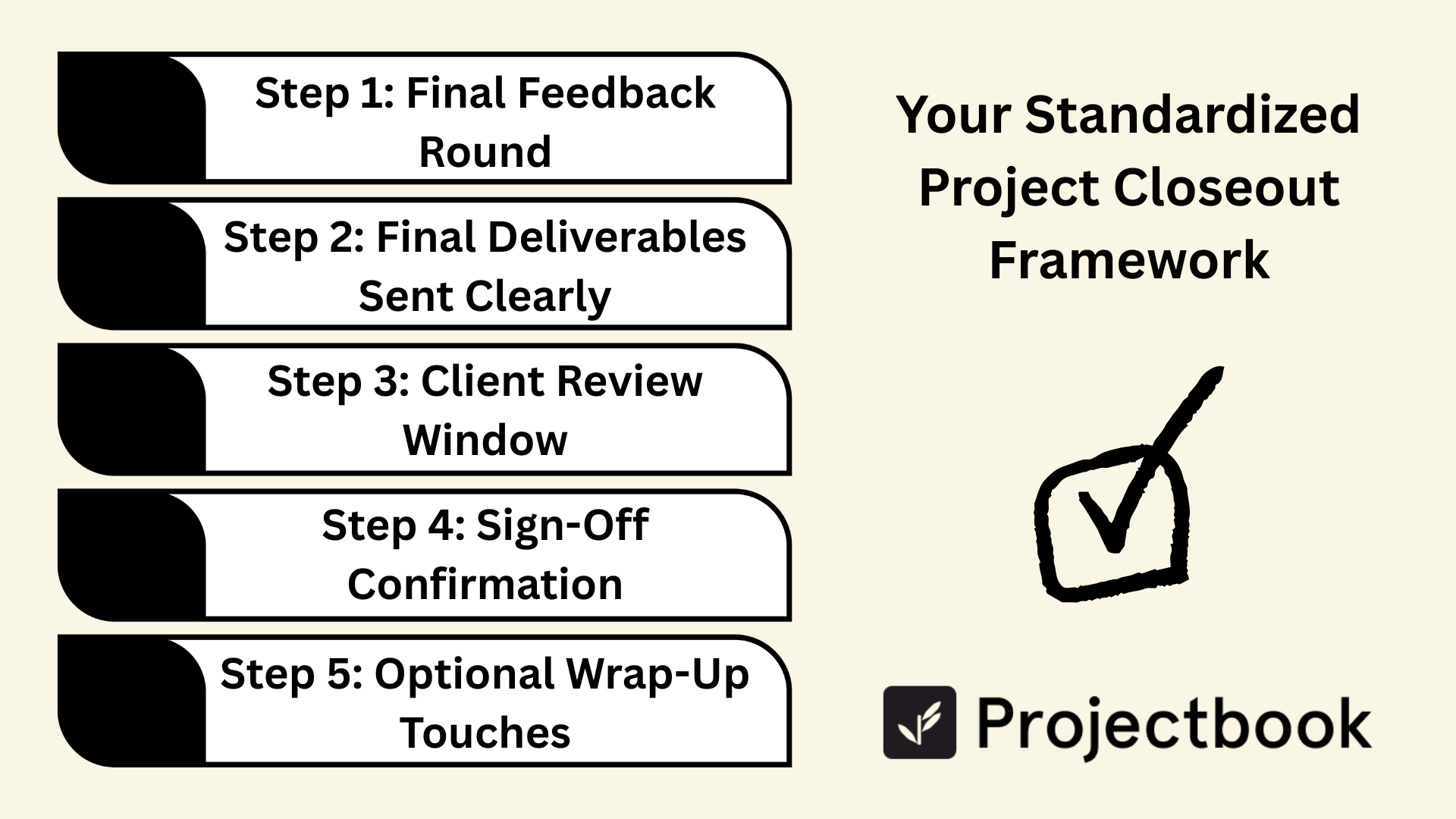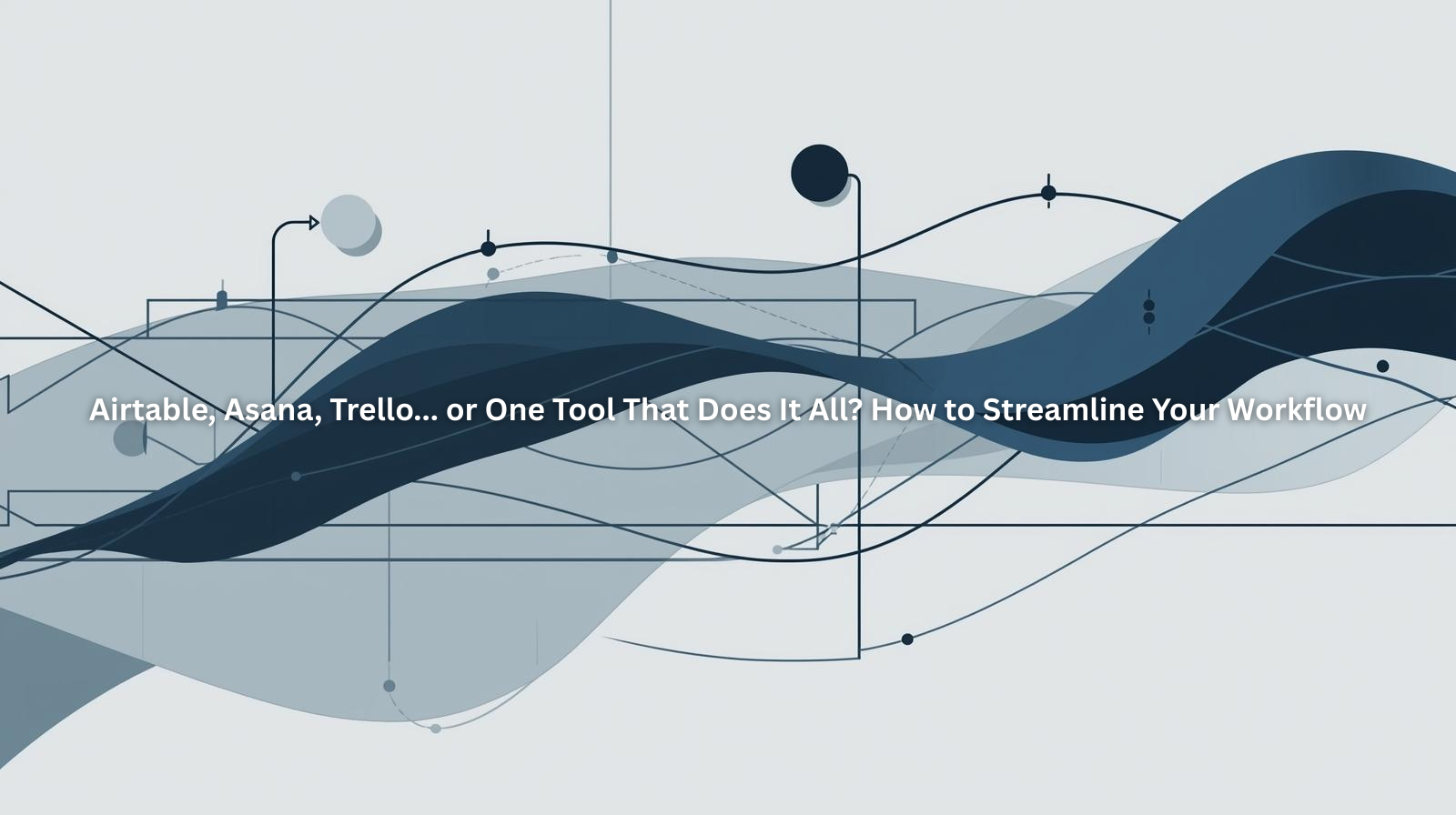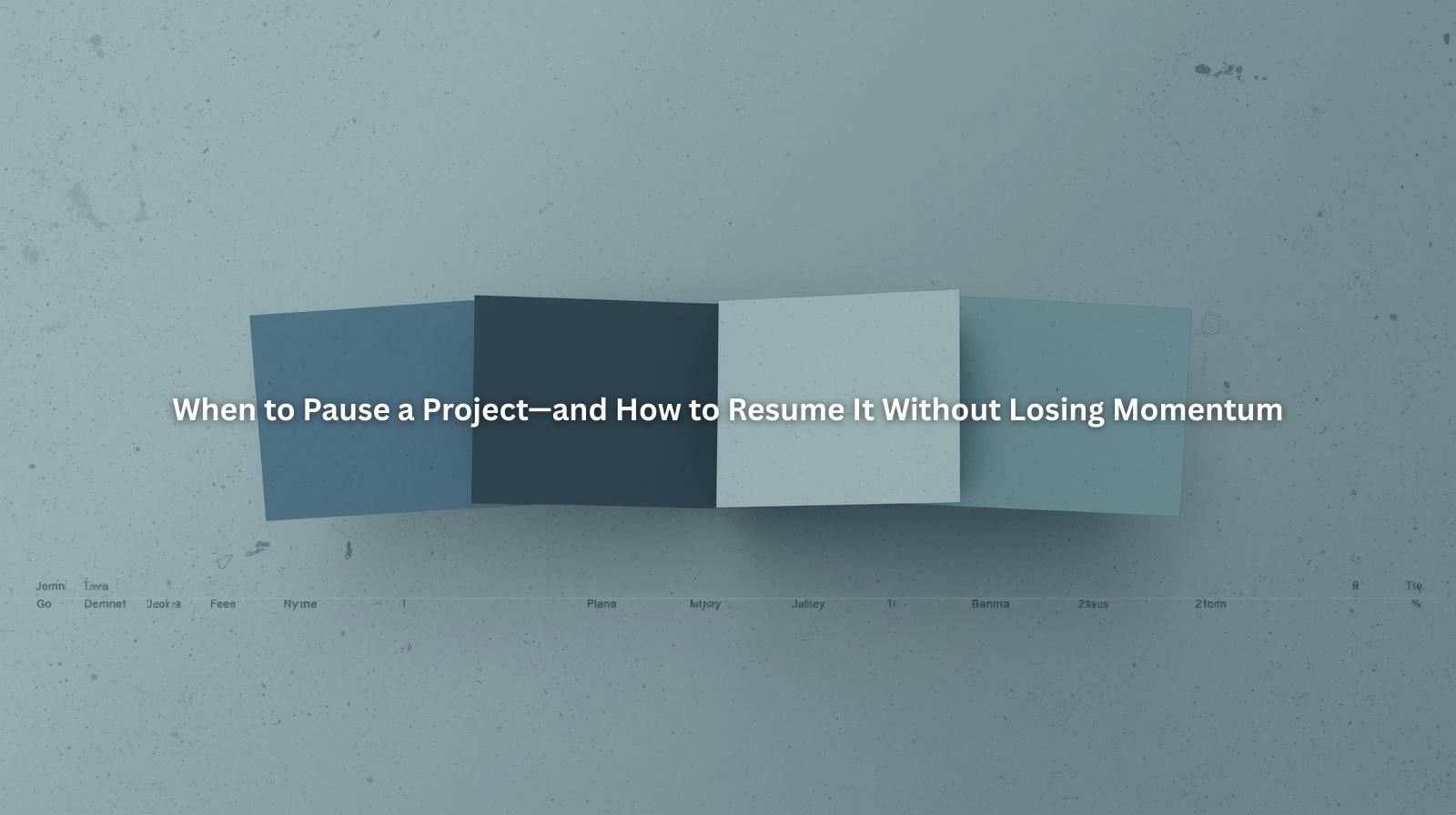From Scope to Sign-Off: How to Standardize the Final 20% of Your Projects

Table of Contents
- The Freelance Trap: Why the Final 20% Always Feels the Hardest
- What Actually Happens at the End of a Project?
- The Risks of a Loose or Unclear Wrap-Up Process
- Your Standardized Project Closeout Framework
- How to Communicate Sign-Off (Without It Feeling Awkward)
- How ProjectBook.co Supports Strong Finishes
- FAQ: Ending Freelance Projects Smoothly
1. The Freelance Trap: Why the Final 20% Always Feels the Hardest
You’ve done the bulk of the work. The client is happy. The files are nearly ready. You’re almost there.
And then—everything slows down.
This is the final 20% of the project lifecycle. And for freelancers, it’s often where things start to unravel. You might end up chasing feedback, redoing small edits with no clear endpoint, or watching a once-exciting project quietly stall.
The final stretch is hard not because the work is complex—but because clarity is missing. Most freelancers don’t have a system for how projects end. They simply “wrap things up” whenever it feels done… until the client sends one more revision. And then another.
But the good news? That last 20% is fixable. You just need structure.

2. What Actually Happens at the End of a Project?
If we break down the final phase of a freelance project, it usually includes a few essential steps:
- Final edits and tweaks after feedback
- Delivering final files in an agreed format
- Client review and approval
- Sending an invoice or final billing
- Offboarding and sharing next steps (if any)
- Optional: gathering feedback or testimonials
The issue is that many of these steps happen informally, inconsistently, or without clear signals to the client about what’s final and what’s flexible. That opens the door to confusion, scope creep, and long, drawn-out endings that sap your energy—and delay getting paid.
3. The Risks of a Loose or Unclear Wrap-Up Process
Let’s talk about what can go wrong when the final phase isn’t structured.
For starters, you might find yourself doing “just one more thing” several times in a row. Without a sign-off process, clients often assume the project is still open—and keep requesting small changes long after your initial scope ended.
Delays in approval also become more common. If the client doesn’t know what to review (or by when), your deliverables sit in limbo. That delays final payment and can impact your availability for new clients.
And perhaps most importantly, your client experience loses its polish. A strong finish leaves a lasting impression. A messy one makes your otherwise great work feel incomplete.
4. Your Standardized Project Closeout Framework
A smooth, professional finish doesn’t have to be complicated. You just need a repeatable process that makes the last phase feel just as intentional as the first.
Here’s a simple framework you can customize:
Step 1: Final Feedback Round
Let the client know when they’re receiving the final draft or version—and make it clear this is the last included revision based on your original scope.
Step 2: Final Deliverables Sent Clearly
Package and deliver everything in one clean folder or space. Include naming conventions, usage notes, and a brief recap of what’s included.
Step 3: Client Review Window
Set a time frame for approval (e.g. “Let me know if anything looks off by Friday, and I’ll finalize it by Monday.”). This encourages timely response and keeps things moving.
Step 4: Sign-Off Confirmation
Once approved, send a short message confirming the project is complete. You can also include a final invoice if needed, or next steps if they’ve booked a retainer.
Step 5: Optional Wrap-Up Touches
If you’re feeling extra polished, include a short feedback form, a link to leave a testimonial, or even a “thank you” message or note that celebrates the collaboration.
You don’t need to reinvent this every time. A simple checklist and a few reusable templates go a long way.

5. How to Communicate Sign-Off (Without It Feeling Awkward)
Many freelancers hesitate to use the word “sign-off” because it feels overly formal or stiff. But it doesn’t have to be.
Try something like:
“Let me know if you have any final notes by Friday. After that, I’ll consider this project wrapped!”
“These are your final deliverables based on our agreed scope. If everything looks good, I’ll mark this one complete.”
“Once you approve this version, I’ll archive the project and send your final invoice.”
These small statements help you stay professional without sounding cold. They signal that the finish line has been reached—gently but clearly.
6. How ProjectBook.co Supports Strong Finishes
One of the things we’ve built into ProjectBook.co is the ability to organize your projects from start to finish—with that crucial final stretch in mind.
With ProjectBook, you can:
- Use custom project templates that include final-phase tasks like “deliver final files” or “send sign-off message”
- Attach feedback cycles and final revisions to specific milestones
- Store and share final deliverables inside the client’s project space
- Add follow-up reminders for testimonials or retainer upsells
- Keep communication and billing connected to the project dashboard
Instead of winging it every time, you can close every project with a sense of clarity, professionalism, and ease—without letting things drag or drift.
7. FAQ: Ending Freelance Projects Smoothly
What if a client keeps requesting edits after sign-off?
Gently refer to the scope and sign-off message. You can always offer additional edits as a new phase or hourly work—but it’s your call.
Do I always need to send a formal sign-off document?
Not necessarily. A clear message or email confirming completion is enough for most projects. But if it’s a large or complex job, a signed approval form may add protection.
Should I include sign-off language in my proposal or contract?
Yes. Mentioning the number of revision rounds and the final approval process up front sets the tone early and prevents surprises later.
Can I use ProjectBook to track my sign-off process?
Absolutely. You can create a “Project Wrap-Up” checklist template and attach it to each project timeline—so you never forget a step again.
Final Word
The end of a project should feel like a confident landing, not a slow fade into confusion.
When you take the time to standardize your final 20%—from revisions to sign-off—you protect your time, improve your client experience, and close the project on a high note.
You don’t need a complicated system. You just need a clear process—and a tool like ProjectBook.co that supports smooth, repeatable finishes.
So the next time you feel a project drifting toward the finish line, take the lead. Wrap it up well. And leave your client remembering how easy you made the entire journey.


